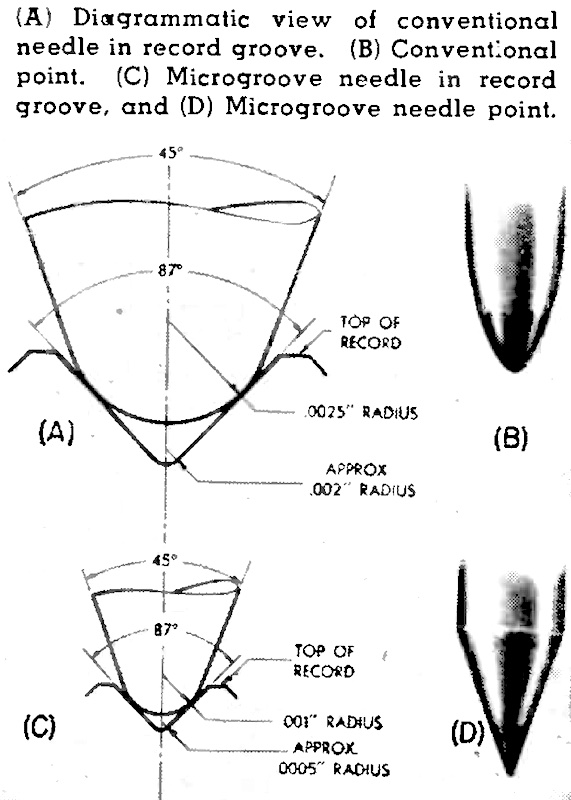EQカーブの歴史、ディスク録音の歴史を学ぶ本シリーズ。前回 Pt.10 では、1949年改定NAB規格の策定の経緯について調べました。その 1949 NAB 規格策定に至る会合では、高域歪を軽減するためにNAB標準規格(録音カーブ)のプリエンファシス(高域増幅)を弱めるべきだ、という技術的な議論も多くみられました。
On the previous part 10, I studied on the history and the background toward the revised NAB Standards in 1949. During the formulation, there was a strong discussion on the NAB Standards’ high frequency pre-emphasis, that was “too much” and “should be weakened to cope with the high frequency distortion”.
具体的には、100μs(+16dB at 10,000Hz)ではなく、少なくとも 75μs(約+13.5dB at 10,000Hz)に落とすべき、といった意見でした。
More precisely, many engineers and researchers at the time claimed that the 100μs pre-emphasis (+16dB at 10,000Hz) should be lowered at least to 75μs (approx. +13.5dB at 10,000Hz).
諸事情で少し間があいてしまいましたが、今回の Pt.11 はその続きで、1948年6月 に Columbia/CBS から突如発表された、家庭市場向け長時間レコード LP (Long Playing Microgroove) のエピソードです。長編になってしまったので、Columbia 録音再生 EQ カーブの話は次回 Pt.12 に回します。
A few months have passed since I posted the last article for some reason – anyway, this time as Pt.11, I am going to continue learning the history of disc recording – the introduction of Columbia/CBS’s LP (Long Playing Microgroove records) for consumer market in June 1948 and its history. As this Pt.11 became extremely lengthy, the story of “Columbia” EQ curves for recording/reproducing will be featured in the coming episode (Pt.12).
調べれば調べるほど、この LP というものが登場したいきさつや歴史自体が、推理小説のような面白さに満ち溢れたトピックでした。
The more I dug into the history (and advent) of Long Playing Microgroove records, the more excitements I got – like I was reading detective novels.

source: LIFE Magazine, July 26, 1948, p.40
MICROSCOPIC VIEW of the record surfaces shows contrast between the old-style .01-inch grooves in bottom half of picture and new .003-inch microgrooves shown above them. LP grooves diminish surface noise.
LIFE誌1948年7月26日号に掲載されたLP登場の記事より。マイクログルーヴLP盤の溝と、従来の78回転盤の溝を比較した写真










